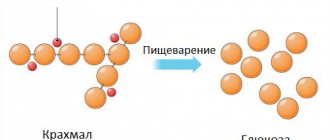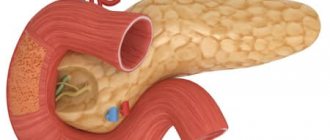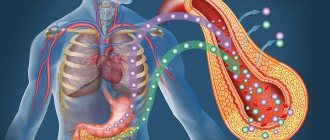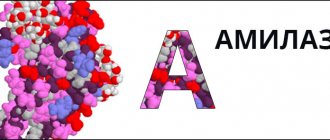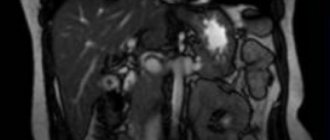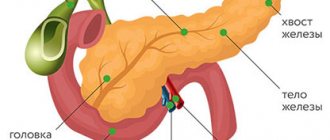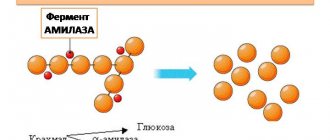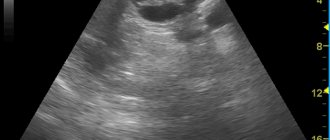Blood tests are done for the timely detection of many diseases and pathological conditions of the body. They are diagnosed by changes in the number of blood cells or enzymes in it. One of the indicators of the health of internal organs, in particular the pancreas, is alpha amylase. This enzyme is produced by the pancreas and is used to break down complex carbohydrates from food. Typically, a healthy person has low levels of amylase; only a little of it enters the bloodstream due to the natural processes of cell renewal. But with various pathological processes its quantity increases. Moreover, it is easier to cope with such situations if they are diagnosed in a timely manner.
general characteristics
Amylase is a digestive enzyme present in the human mouth and gastrointestinal tract. It participates in carbohydrate metabolism and breaks down complex carbohydrates. Sometimes it can be found in the kidneys, liver and even mammary glands. There are three types of amylase; alpha is usually found in the human body. In the blood it is presented in two varieties.
Pancreatic amylase is produced by the pancreas. This variety is present in serum up to 40%. The rest is about 60%. This is salivary amylase. Blood tests indicate an increase in total amylase, usually due to its pancreatic variety. But sometimes pathologies of the salivary glands also cause an increase in this type of enzyme.
In healthy adult women and men, the level of amylase in the blood is approximately the same. It ranges from 25 to 125 U/l. In newborns, this enzyme is not yet produced, so its amount gradually increases, returning to normal only by the age of one year. Usually in a child in the first year of life it does not exceed 5–65 U/l. There may also be differences in older people. After 70 years, amylase levels can range from less than 20 U to more than 160 U, and this is normal.
Sometimes pancreatic amylase levels are also used for diagnosis. After all, it is precisely this that is an indicator of the normal functioning of the pancreas. Pancreatic amylase is usually determined in women, since they are more likely to experience fluctuations in this level due to hormonal imbalances, for example, during pregnancy or lactation. The norms for pancreatic amylase levels in women after 19 years of age range from 8 to 51 U/l. In infants up to six months it does not exceed 8 units. And from six months to 2 years, pancreatic amylase in the blood ranges from 1 to 31 units.
Pancreatic amylase
Pancreatic amylase is one of the types of amylase that is produced by the pancreas.
Synonyms Russian
P-amylase isoenzyme, pancreatic alpha-amylase, P-amylase, P-type amylase.
English synonyms
Pancreatic alpha-amylase, pancreatic AML, P-type amylase, P-type alpha-amylase, amylase isoenzymes, amylase isoforms.
Research method
Enzymatic colorimetric method.
Units
U/L (unit per liter).
What biomaterial can be used for research?
Venous blood.
How to properly prepare for research?
- Do not eat for 12 hours before the test.
- Avoid physical and emotional stress and do not smoke for 30 minutes before the test.
General information about the study
Amylase is a digestive enzyme that can break down carbohydrates.
The largest amount of amylase is found in the salivary and pancreas glands.
Amylase, which is produced in the pancreas, is pancreatic amylase (P-type) and is part of pancreatic juice. From the pancreas, pancreatic juice containing lipase passes through the pancreatic duct into the duodenum, where it helps digest food.
Amylase of the salivary glands - salivary amylase (S-type) - digests food starch in the oral cavity.
Normally, a small amount of amylase circulates in the blood. In this case, about 60% is salivary amylase (S-type), and the remaining 40% is pancreatic amylase.
When damage to the pancreas occurs, as in pancreatitis, or if the pancreatic duct is blocked by a stone or tumor, pancreatic amylase (P-type) begins to leak into the bloodstream in large quantities. There is no increase in salivary amylase activity.
Small amounts of amylase are also produced in the ovaries, intestines and skeletal muscles.
What is the research used for?
- An increase in the activity of pancreatic amylase in the blood without a change in the activity of salivary amylase confirms the pathology of the pancreas. For example, in acute pancreatitis, its activity in the blood can increase to 90% of the total amylase activity.
- For the diagnosis of pancreatitis in the postoperative period, when the activity of total amylase is increased.
- If pathology of the salivary glands, ovaries or bronchi is suspected.
When is the study scheduled?
- When the diagnosis of “acute” or “chronic pancreatitis” is confirmed.
- If you suspect a disease of the salivary glands and ovaries.
What do the results mean?
Reference values
| Age | Reference values |
| 1 – 10 years | |
| 10 – 18 years | |
| > 18 years old |
Interpretation of the results of the analysis for pancreatic amylase is carried out taking into account the assessment of the total amylase activity in the blood or urine. If the total amylase activity is increased and the activity of pancreatic amylase is decreased, then damage to the pancreas is unlikely and pathology of the ovaries, intestines, bronchi or other organs must be excluded.
Reasons for increased pancreatic amylase activity
- Acute pancreatitis. In this disease, the activity of pancreatic amylase can be significantly higher than normal and constitute a larger percentage of the activity of total amylase. However, in some patients with acute pancreatitis, amylase may increase slightly or even remain normal. In general, amylase activity does not reflect the severity of pancreatic damage in pancreatitis. For example, with massive pancreatitis, sometimes the death of most of the cells that produce this enzyme occurs, so its activity may not be changed.
- Chronic pancreatitis. With it, amylase activity is initially moderately increased, but then may decrease and return to normal as damage to the pancreas worsens.
- Decompensation of diabetes mellitus is diabetic ketoacidosis, both due to high sugar levels and due to the concomitant involvement of the pancreas in the pathological process.
- Trauma to the pancreas.
- Pancreas cancer.
- Blockage (stone, scar) of the pancreatic duct.
- Acute appendicitis, peritonitis.
- Perforation (perforation) of a stomach ulcer.
- Acute cholecystitis is inflammation of the gallbladder.
- Intestinal obstruction.
- Ruptured aortic aneurysm.
- Macroamylasemia is a condition where amylase binds to large proteins in the serum and therefore cannot pass through the glomeruli, accumulating in the blood.
Reasons for decreased pancreatic amylase activity
- Decreased pancreatic function.
- Cystic fibrosis (cystic fibrosis) of the pancreas is a severe hereditary disease associated with damage to the exocrine glands (lungs, gastrointestinal tract).
- Removal of the pancreas.
What can influence the result?
- Captopril, corticosteroids, oral contraceptives, furosemide, ibuprofen, and narcotic analgesics can increase amylase activity.
- Chronic renal failure sometimes leads to increased activity of pancreatic amylase.
- Elevated cholesterol can cause decreased activity of pancreatic amylase.
Important Notes
- In acute pancreatitis, an increase in pancreatic amylase activity is usually accompanied by an increase in lipase activity. The latter may be somewhat delayed, but lipase activity remains elevated longer.
- Amylase activity in children in the first two months of life is low; it rises to adult levels by the end of the first year.
Also recommended
- Total amylase in daily urine
- Serum total amylase
- Lipase
Who orders the study?
General practitioner, therapist, gastroenterologist, surgeon.
Blood tests
The level of amylase is detected by biochemical analysis of venous blood. It is taken in the morning on an empty stomach. Before this, you should not drink, eat, smoke, or take medications. It is advisable to warn the doctor about medications that the patient takes regularly, as they may affect the results.
Determination of amylase level occurs during a biochemical blood test
Most often, the analysis is carried out for complex diagnosis of various diseases, as well as for preventive purposes. This test is prescribed when examining the ovaries, pancreas, and respiratory organs. It must be done in the differential diagnosis of acute or chronic pancreatitis, cholecystitis and other diseases of the gastrointestinal tract, as well as in cases of suspected cystic fibrosis.
Determining the amount of amylase in the blood helps diagnose the causes of abdominal pain and other symptoms of digestive disorders. A slight deviation from the norm is not a reason to panic. If blood amylase is elevated by only a few units, but the patient is feeling well, this may be evidence of high cholesterol or kidney failure. But such indicators can also be a consequence of taking certain medications, for example, contraceptives, analgesics or diuretics, alcohol abuse or disordered eating. This is usually a temporary condition that poses no danger to the patient.
An alarming symptom is an increase in amylase in the blood by 2–3 times. This necessarily means that there are serious health problems. Moreover, the earlier they are identified, the easier it is to deal with them.
The normal level of amylase in the blood of men
Typically, an amylase test is prescribed in the following cases:
- diagnostics of the pancreas;
- determining the causes of abdominal pain;
- monitoring the correct treatment of pancreatitis and other diseases of the pancreas;
- viral mumps;
- cystic fibrosis;
- comprehensive diagnosis of other pathologies of the gastrointestinal tract.
A person should consult a doctor for such an analysis if the following symptoms appear: abdominal pain, especially if they are localized in the right side of the abdomen, upset stool, nausea, loss of appetite. This is also necessary when a person feels a decrease in performance, weakness and lethargy, and notices causeless weight loss.
Reasons for the increase
When alpha amylase in the blood is greatly increased, this indicates that pathological processes are occurring in the body. They are usually associated with abnormal activity of the pancreas. Due to inflammatory processes, it can produce large amounts of pancreatic juice, which contains amylase. In addition, the flow of the enzyme into the blood may increase due to the presence of obstacles in the movement of pancreatic juice, as well as the destruction of gland tissue.
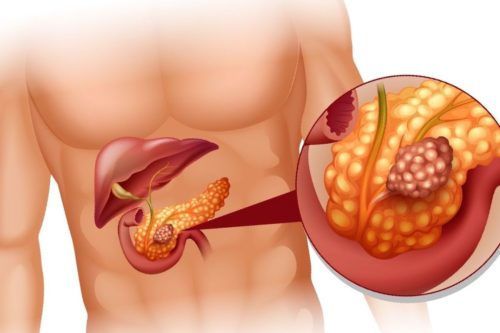
Most often, such indicators in tests are detected in cases of disruption of the pancreas.
That is why determining the level of this enzyme is informative for the diagnosis of many pancreatic pathologies. This is primarily acute pancreatitis, which most often occurs in adults who abuse alcoholic beverages or fatty foods. Due to the acute inflammatory process, gland enzymes enter the blood. In addition, destruction of pancreatic tissue and the development of pancreatic necrosis is possible. In acute pancreatitis, amylase levels are usually increased by 8 times or more.
In chronic pancreatitis, the functioning of the pancreas is gradually disrupted. At the same time, the level of amylase increases from 3 to 5 times. A similar increase in its quantity is also observed with the development of pancreatic tumors, after abdominal trauma with its damage, and with pancreatic necrosis.
But there are other reasons for increased amylase in the blood. These may be pathologies of other organs of the digestive tract, especially those located next to the pancreas. Usually the amount of enzyme increases slightly - 2-3 times. This happens with the following pathologies:
- mumps;
- acute or chronic cholecystitis;
- cholelithiasis;
- infectious hepatitis;
- peritonitis;
- stomach ulcer;
- intestinal obstruction;
- Crohn's disease;
- acute appendicitis;
- ectopic pregnancy.
In addition, sometimes elevated amylase levels are detected in various metabolic pathologies of the body. This is primarily cystic fibrosis, a severe congenital disease of the entire body that affects the digestive tract, as well as diabetes mellitus. It is these diseases that lead to disruption of carbohydrate metabolism, as a result of which amylase is consumed unevenly.
There is also such a pathology as macroamylasemia. It is characterized by the fact that this enzyme combines with a protein molecule in the serum and cannot be excreted from the body. Because of this, amylase accumulates in the blood. This causes its high level in biochemical analysis.
Decoding the results
The norm of total amylase is 28-100 U/l. The pancreatic enzyme concentration is interpreted in relation to the total amount of amylase. The most common cause of elevated readings is pancreatitis. In acute illness, values can exceed the norm by 6-10 or more times. It remains high for 3-5 days. If the readings are several times higher than normal, the pain is most likely caused by damage to the pancreas. It must be taken into account that in some patients with acute pancreatitis, enzyme activity remains within normal limits or increases slightly. The severity of the disease cannot be judged from the results of this test. For example, if most of the cells that produce the enzyme die, its activity remains within normal limits. With a chronic disease, the indicators first increase and then gradually decrease. Most often, chronic disease develops in alcoholics. An increase in the amount of the enzyme can be explained by other reasons (for example, pancreatic malignancy, peritonitis, pregnancy).
A decrease in the amount of the enzyme is observed in patients with high cholesterol, severe hepatitis, decreased pancreatic functionality, and cystic fibrosis. To obtain an interpretation of the results and further recommendations, you should consult a doctor. In many cases, if indicators are violated, the patient requires immediate medical attention. Self-medication is unacceptable, as it can cause irreversible pathological changes in the body.
What to do
If a blood test reveals elevated amylase levels, this does not always mean that the person is sick. This indicator in itself is not dangerous; it simply indicates disruptions in the body’s metabolic processes or a disruption in the functioning of the pancreas. If the patient does not have any illness and feels good, nothing can be done. But usually an additional examination is prescribed to eliminate the risk of pathologies.
Only by comparing the data of a comprehensive examination can a doctor determine why the level of this enzyme is elevated. After identifying the cause of the pathology and the severity of the patient’s condition, he can choose the right treatment.
With a slight increase in the amount of this enzyme, no special medications are required. General strengthening methods are usually prescribed. This is the normalization of daily and sleep patterns, and an increase in physical activity. Walking in the fresh air is beneficial. But in the presence of an acute inflammatory process, bed rest and limitation of exercise are necessary. In acute pancreatitis, drug therapy must be prescribed.
It usually includes drugs aimed at reducing the activity of the pancreas, for example, Famotidine or Quamatel. You also need antispasmodics - Duspatalin, No-Shpa, Buscopan, Papaverine, painkillers - Baralgin and antihistamines to relieve swelling - Tavegil.
It is impossible to treat pancreatic pathologies or metabolic disorders that lead to increased amylase levels without normalizing nutrition. A special diet is necessary to ensure that enzymes are produced by the pancreas in the required quantities. Be sure to exclude alcohol, strong coffee and tea, chocolate, and carbonated drinks from the diet. You should not eat fatty and spicy foods, fried foods, or smoked foods. Such patients need to eat small portions 5-6 times a day.
Normal values
Total amylase by age
- 0-30 days (newborn): 0-6 units/l;
- 31-182 days: 1-17 units/l;
- 183-365 days: 6-44 units/l;
- 1-3 years: 8-79 units/l;
- 4-17 years: 21-110 units/l;
- after 18 years (adults): 26-102 units/l.
Pancreatic amylase by age
- 0-24 months: 0-20 units/l;
- 2-18 years: 9-35 units/l;
- after 18 years: 11-54 units/l.
(Please note that reference intervals may vary between laboratories, so for blood and urine tests please refer to the intervals listed on the report).
